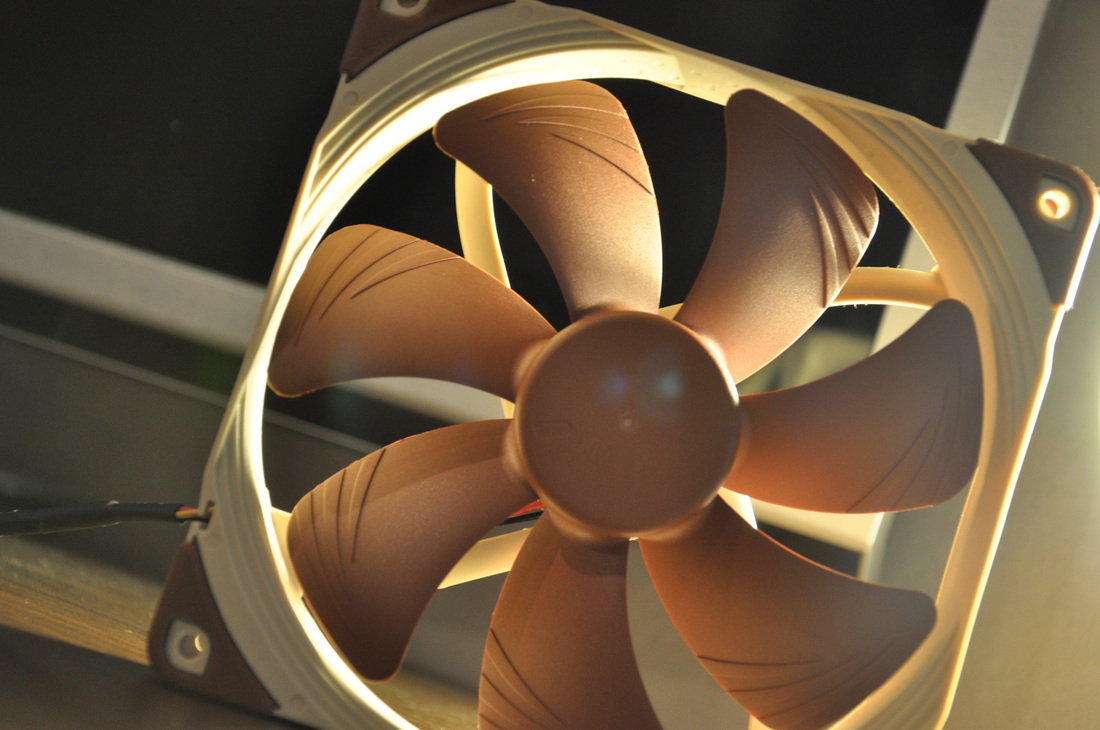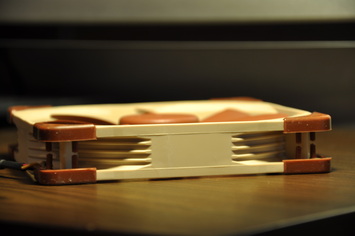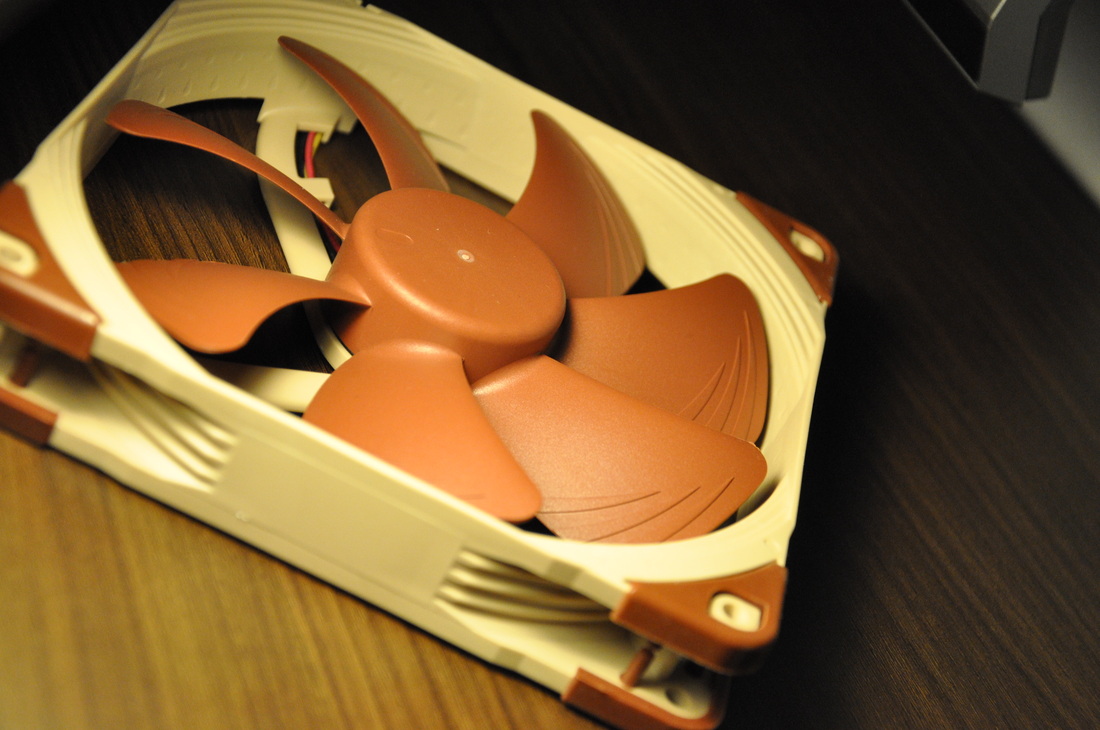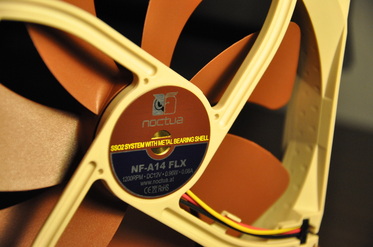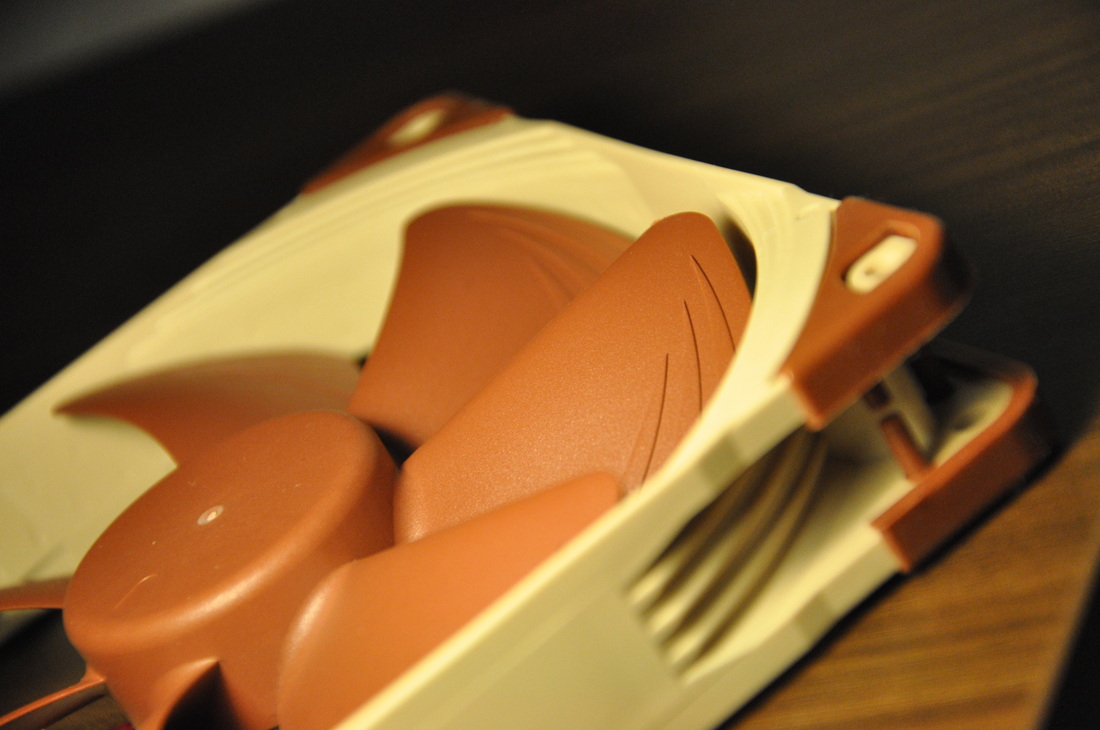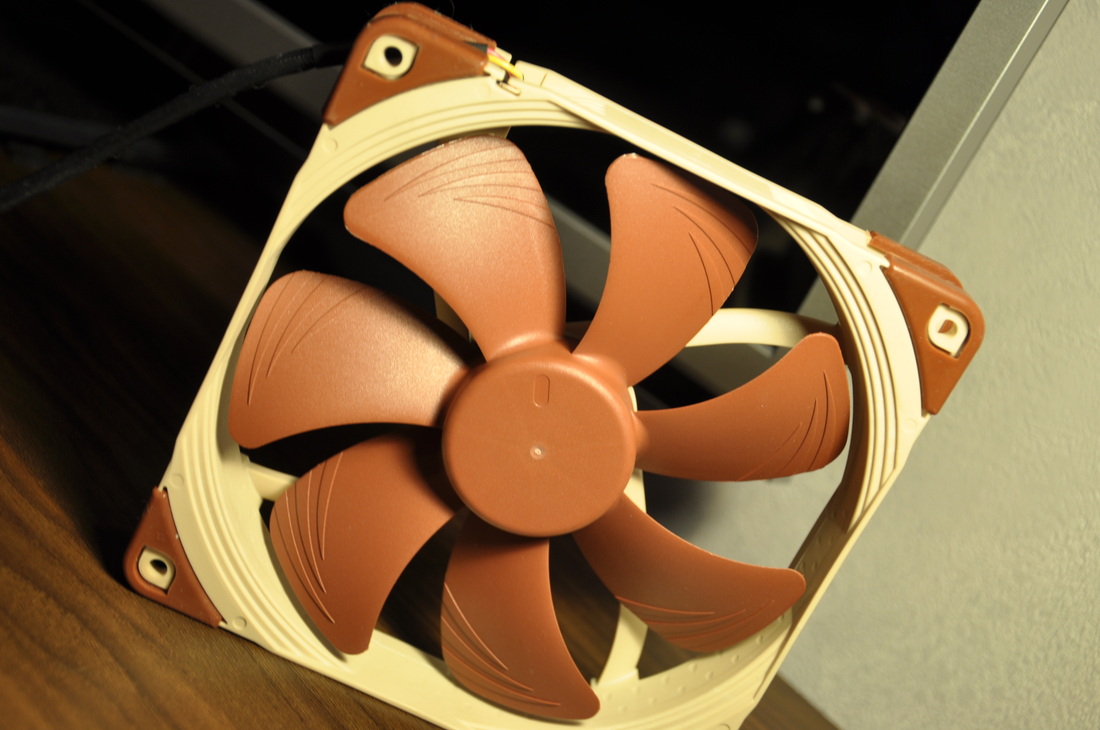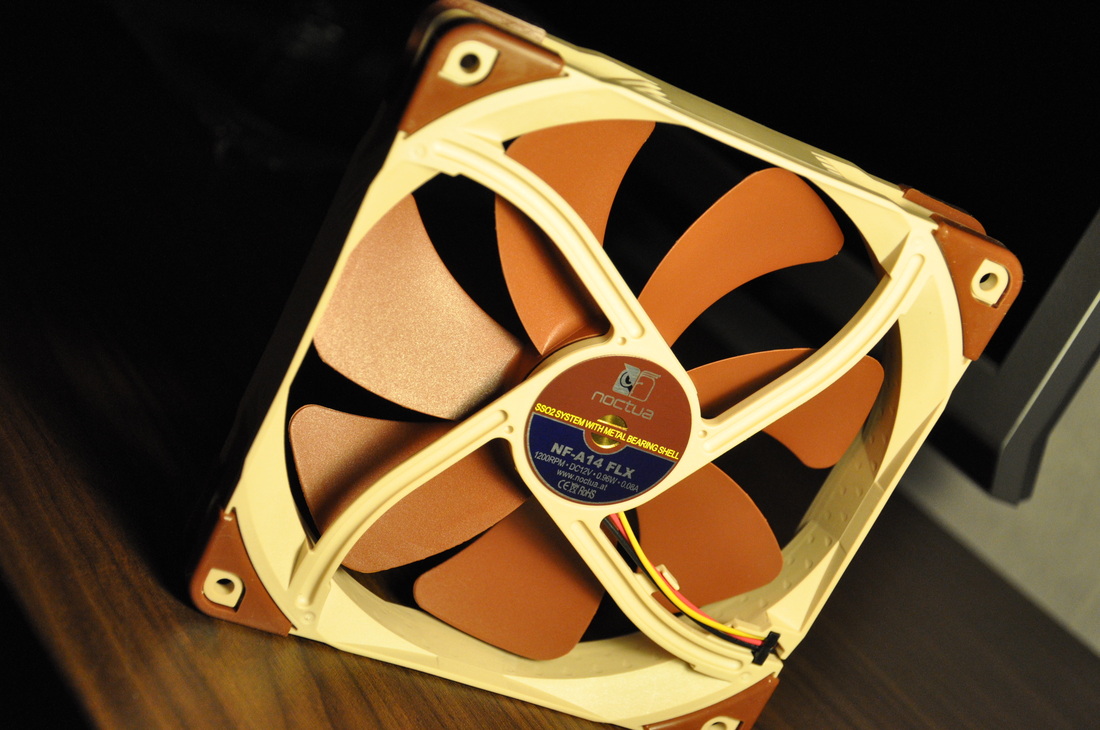Have Noctua supplied us with variants of a fan that looks gorgeous or is it just us?
Here’s the spec:
FLX: (without L.N.A, with L.N.A, with U.L.N.A)
Max rpm 12000, 1050, 900
Airflow(m3/h) 115.5, 101.9, 88.7
Noise(dB(A)) 19.2, 16.4, 13.8
Static Pressure (mmH2O) 1.51, 1.18, 0.89
ULN: (without L.N.A, with L.N.A)
Max rpm 800, 650
Airflow(m3/h) 79.8, 66.4
Noise(dB(A)) 11.6, 9.1
Static Pressure (mmH2O) 0.69, 0.42
Accessories: 30cm Extension cable, Low Noise adaptor, Ultra low noise adaptor(FLX only), Molex adaptor, anti-vibration mounts, standard screws.
FLX: (without L.N.A, with L.N.A, with U.L.N.A)
Max rpm 12000, 1050, 900
Airflow(m3/h) 115.5, 101.9, 88.7
Noise(dB(A)) 19.2, 16.4, 13.8
Static Pressure (mmH2O) 1.51, 1.18, 0.89
ULN: (without L.N.A, with L.N.A)
Max rpm 800, 650
Airflow(m3/h) 79.8, 66.4
Noise(dB(A)) 11.6, 9.1
Static Pressure (mmH2O) 0.69, 0.42
Accessories: 30cm Extension cable, Low Noise adaptor, Ultra low noise adaptor(FLX only), Molex adaptor, anti-vibration mounts, standard screws.
Design:
So seeing as both the ULN and FLX work of the same chassis it would be pointless to provide separate design reviews for each fan, so to start it off we will work inwards from the cable.
As general practice Noctua provides a 20cm sleeved cable, wired to the fan, if this is too short they also supply a 30cm sleeved extension cable as well. In my opinion the sleeving of the cables is the highest quality I have ever come across, it has a waxy feel too it and does not feel cheap by any stretch of the imagination. It also does not separate when squashed. The sleeving however finishes when it meets the fan and does not continue all the way through to the motor, although it is like this on every fan to my knowledge, I feel that Noctua have the potential to design some way of integrating the cables a little better in this respect.
As general practice Noctua provides a 20cm sleeved cable, wired to the fan, if this is too short they also supply a 30cm sleeved extension cable as well. In my opinion the sleeving of the cables is the highest quality I have ever come across, it has a waxy feel too it and does not feel cheap by any stretch of the imagination. It also does not separate when squashed. The sleeving however finishes when it meets the fan and does not continue all the way through to the motor, although it is like this on every fan to my knowledge, I feel that Noctua have the potential to design some way of integrating the cables a little better in this respect.
| On all 4 corners on each side of the fan we have the integrated anti-vibration pads first seen on the NF-F12, I did and still do to this day feel that this for some reason is my favourite feature out of every fan I have worked with, I don’t know why but I feel that these while being perfect for their job, give the fan a little bit more of a ‘premium’ look that easily detracts from the colour scheme. Using these in conjunction with the anti-vibration mounts is definitely a cool combo to use. |
At the corners again, moving in from the pads we see the stepped inlet design, another feature we first saw on the NF-F12, for future notice we will see a lot of these designs further into the review. This design is said to help direct the air into the fan in a more efficient manner. While I can not prove if this is true or not I can definitely say that just like the anti-vibration pads, these make the fan LOOK good.
| Down the insides of the chassis we see the inner surface micro-structures (see the previous paragraph for where we saw these last). Essentially this is designed to create a kind of air buffer between the fan blades and chassis lowering noise from the blades. I guess it speaks for its self when we look at the performance later on. |
The Above 3 create what is known as the AAO (Advanced Acoustic Operation) frame, from this I believe that we will be seeing these integrated a lot more in the future which I am happy about.
Moving on from that we have a NEW feature with this new range. It is called the flow acceleration channels and basically what they are is another feature that helps direct the airflow in a manner that reduces the noise produced while even speeding the air up through the fan. Now the shape of the blades is very curved, something I have never really liked in a fan, I am more into fans with sharp powerful looking blades. These channels however add that little extra touch that give it a bit of that feel to it.
| Putting all of that to the side though and focusing on the main piece of this fan, the heart of it essentially, the motor and bearing unit. On this product we have the second revision of the self stabilising oil-pressure bearings by Noctua, these are expensive bearings compared to what most competitors use and it is reflected in the performance. To add to this we also have the bearings are surrounded in a brass shell to help performance in the long term. The overall chassis and build quality is to a standard I never seen on any competitor fans. The chassis does not bend at all and feels very secure. |
Performance:
NF-A14 FLX: It pushes a good amount of air and at a low noise, you can’t hear the motor or bearings unless putting your ear right next to the fan, this keeps the noise the fan produces at a good low hum that is barely noticeable due to it’s frequency.
NF-A14 ULN: With a maximum rotational speed being lower than the FLX’s lowest this fan doesn’t push anywhere near the amount of air however what you get is due to the lower speed, absolutely NO noise. This is because the fan goes so slow the amount of turbulence created is so minimal you wont hear it. This fan is basically silent for all intents and purposes.
NF-A14 ULN: With a maximum rotational speed being lower than the FLX’s lowest this fan doesn’t push anywhere near the amount of air however what you get is due to the lower speed, absolutely NO noise. This is because the fan goes so slow the amount of turbulence created is so minimal you wont hear it. This fan is basically silent for all intents and purposes.
Conclusion:
an arguably expensive fan just like most of Noctua’s range, this however is a price worth paying because not only does the build quality reflect the price but so does the performance.The colour scheme is a way of making sure other people KNOW you have Noctua fans, bragging rights guys…
Verdict:
Rating- 9/10
Value- 8/10
Value- 8/10
